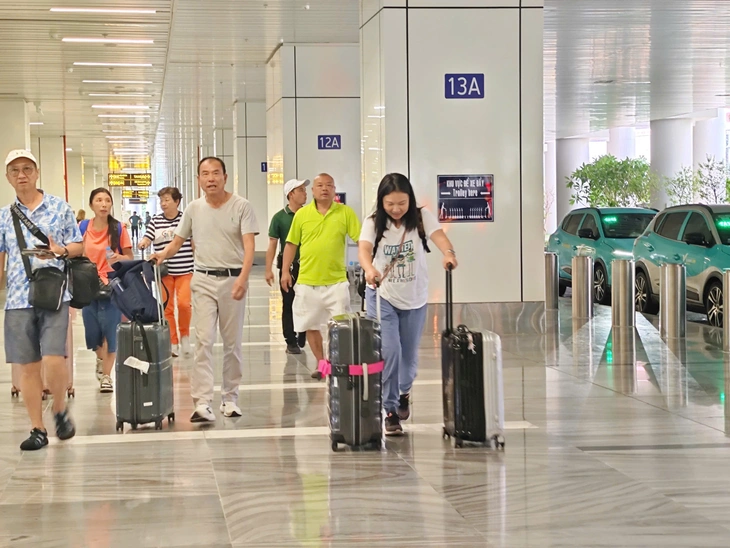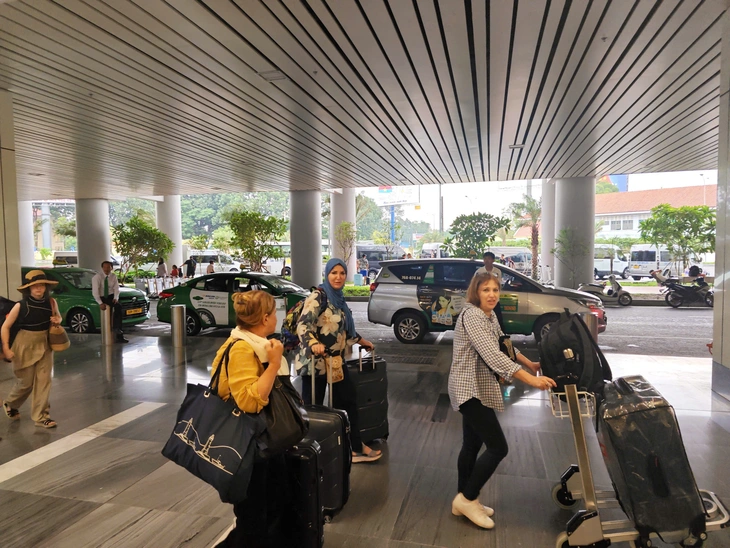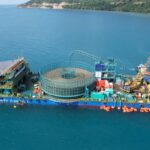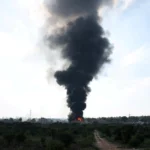Confusing signs, long distances, high taxi fares… make it difficult for passengers to find a taxi at T3 Terminal of Tan Son Nhat Airport, akin to an ‘obstacle course’.
Following the article on August 11, many readers continued to share their opinions about the inconveniences at the pickup area of this new terminal, worth 11 trillion VND, after more than four months of operation.
Picking up relatives, exhausting search for parking
One reader recounted arriving by motorbike to pick up a relative at the terminal during heavy rain. The signage was unclear, and when entering the main hall, security stopped them because motorbikes were prohibited. Outside, they found a parking spot but were then required to walk to the terminal.
«Because of the heavy rain, I had to give up and look for another parking spot. Eventually, I found one but had to go down to the basement and navigate a long, winding path to reach the elevator to the terminal,» the frustrated reader shared.
According to the reader, it’s hard to accept that such a large terminal could be so inconvenient for passenger pickup.
If local passengers face difficulties, international travelers have it even worse. While calling a taxi from the hotel was easy, finding one at the terminal was a nightmare. Dragging luggage around with no clear pickup point was exhausting.
Another reader described their experience trying to book a taxi, only to have drivers cancel repeatedly because they didn’t want to enter T3 Terminal. Eventually, the passenger had to wait 20-30 minutes for a ride.
On the way home, the driver explained that no one wants to pick up passengers at T3 due to frequent traffic jams. During peak hours, it can take over an hour just to reach the pickup point.
A reader arriving from Hai Phong at night reported struggling to find clear signage inside the terminal, describing the layout as a «maze.» Even after exiting, navigating the area was just as confusing.
«Despite T3 being modern, I still find T1 much more convenient and easier to navigate,» the reader said.
Another passenger shared their frustration: «Twice I’ve had to drag heavy luggage upstairs, only to find escalators while elevators straight down were marked ‘for staff only,’ making movement even harder.»
Upstairs, airport shuttle services quoted exorbitant prices—550,000 VND for a trip to District 2 (old), eventually haggled down to 480,000 VND. Meanwhile, a ride-hailing taxi from the ground floor cost only 180,000 VND for the same distance.
Some taxi drivers noted that while locals can ask for directions, international travelers often end up dragging their luggage around, sometimes even reaching bus stops or main roads. Taxis struggle to pick up passengers because they can’t stop outside designated areas.

Another reader described their chaotic experience after a flight from Da Nang to Ho Chi Minh City. After booking a taxi, they had to wait a long time, only for the driver to ask them to walk 500 meters forward due to restricted access. Moving through crowds while dragging luggage was exhausting.
Meanwhile, a reader who had traveled through international airports like Singapore’s Changi, Malaysia, South Korea, and Australia noted how clearly marked and well-organized their pickup systems were, with separate lanes for buses, taxis, and ride-hailing services, ensuring smooth operations.
Improving the experience at T3 Terminal
Readers suggested that a project worth 11 trillion VND like T3 Terminal should not suffer from inconsistent design and operations. From T1 and T2 to the «modern» T3, passenger pickup at Tan Son Nhat Airport remains disorganized and inefficient.
One proposal was to adopt the model of Singapore’s Changi Airport, where passengers and vehicles queue systematically under staff guidance. Vehicles enter in a «fishbone» pattern before merging onto the main road, avoiding long taxi queues.
«It’s unacceptable for an international airport to have drivers haphazardly approaching passengers in the terminal like a market. We should learn from global best practices,» the reader suggested.</p






